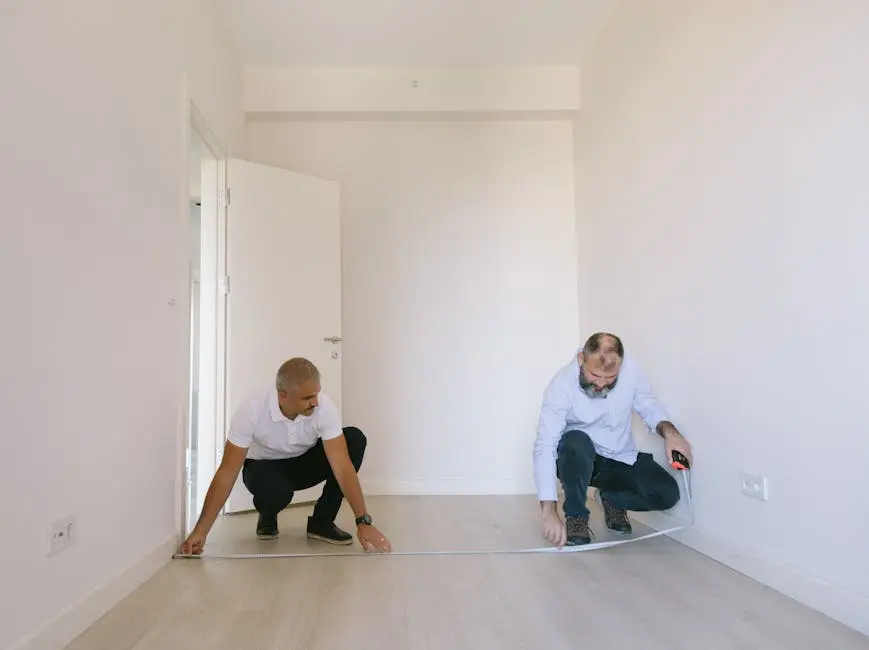When purchasing or renovating a property, a structural inspection is a crucial step. These inspections help you identify any potential issues with the property’s integrity. Asking the right questions can make all the difference in ensuring a safe, sound investment.
1. What is the Condition of the Foundation?
The foundation forms the backbone of any structure. It’s imperative to ask about any signs of cracks, leaks, or shifts that might indicate deeper issues beneath the surface. Over time, natural settling can cause minor cracks, but significant shifts could suggest foundational instability. Inquire about the soil composition and drainage around the foundation, as these factors can dramatically impact the building’s longevity. Remember, a solid foundation is not just about what’s visible—underlying problems often manifest slowly and can lead to costly repairs if not addressed promptly.
2. Are There Any Signs of Water Damage?
Water damage can silently ruin both aesthetics and the structural backbone of a building. Ask about staining, dampness, and any musty odors, especially in basements and attics. These are tell-tale signs of potential water problems. It’s critical not just to identify these issues but to understand their origins.
You should also inquire about past water damage reports and the measures taken to rectify those issues. Has the roof been inspected and repaired regularly? What about the gutters and downspouts? Efficient water management systems can prevent many structural problems, saving you future headaches.
3. How is the Roof Holding Up?
A building’s roof is its primary shield against weather elements. Investigate the age and material of the roof; different materials have varying longevity. Query about any repairs or replacements that have been undertaken. Missing shingles, water stains on ceilings, or visible sagging can all be indicators of roof problems.
Furthermore, consider the drainage efficiency of the roof. Does it have proper gutters, and are they being maintained? An overlooked aspect of roofing is its ventilation—ask about it to avoid issues like rot and pests that can stem from poor ventilation.
4. Is the Attic Properly Ventilated?
Proper attic ventilation is often overlooked but plays a crucial role in maintaining a building’s health. Ask if the attic is adequately ventilated to prevent moisture accumulation, which can lead to wood rot or mold. The presence of mildew or a musty smell can be strong indicators of poor ventilation.
5. Are the Walls Structurally Sound?
The walls support the building and define its strength. Look for signs of bowing, cracks, or damp surfaces. Vertical cracks could mean settling, while horizontal ones might suggest more serious structural concerns. Additionally, ask if insulation within the walls is adequate to ensure energy efficiency and to reduce external noise.
6. What is the State of the Basement?
Basements, often prone to moisture issues, should be inspected thoroughly. Ask about any water intrusion, musty odors, or structural concerns like cracks. Investigate if sump pumps are a part of the basement’s drainage system and whether they are in working condition.
Consider the history of the basement’s maintenance and any measures implemented to combat potential flooding. Out of sight shouldn’t mean out of mind when it comes to the health of your property’s basement area.
7. Are the Windows and Doors Functioning Properly?
Windows and doors must offer smooth operation without gaps that allow drafts. Misalignment or sticking doors and windows can signify structural movements. Inquire about any efforts to update or maintain these critical components and consider testing them yourself to ensure they are functioning properly.
8. Is the Plumbing System Up to Code?
A building’s plumbing must meet local codes. Faulty plumbing can lead to extensive water damage and even structural issues over time. Confirm the system’s compliance with current standards and ask about any past or recurring problems.
9. What is the Status of the Electrical System?
Electrical safety is essential. Investigate the condition of the wiring and ensure the system has been upgraded to handle modern loads. Also, confirm that the circuit breakers and outlets are functioning correctly to avert any potential hazards.
10. Is There Evidence of Pest Infestations?
Pests, especially termites, can compromise a building’s structure. Ask about any pest control measures in place and look for evidence like droppings or damaged wood. Considering professional pest inspection could also provide peace of mind.
11. How are the Floors Maintaining Their Integrity?
Floors should be sturdy and even. Sagging floors may indicate a problem with the subfloor or joists. Evaluate the materials used and ask about past repairs to understand their current condition and future requirements.
12. What Type of Insulation is Installed?
Insulation keeps your building energy efficient and comfortable, but not all insulation is equal. Verify the type used in the building and whether it’s suitable for your climate and property needs. Efficient insulation can save significant costs in the long run.
13. Is There Adequate Drainage Around the Property?
Poor drainage is a precursor to structural issues. Walk the periphery of the building to ensure that the land slopes away from the foundation. Ensuring a robust drainage system can maintain the structural health of the property by directing water away.
14. Are There Visible Signs of Wear and Tear?
Any building will experience wear and tear over time. However, excessive signs can hint at neglect. Examine both interior and exterior elements for maintenance indicators such as fresh paint or well-kept lawns. These details often reflect the overall care given to the property.
15. What Repairs Have Been Made Recently?
Knowing the history of repairs gives insight into the property’s recurring issues. Ask about major renovations and whether the fixes were temporary or permanent solutions. Understanding the quality of past work can help forecast future repairs and reinforcements you might need.






